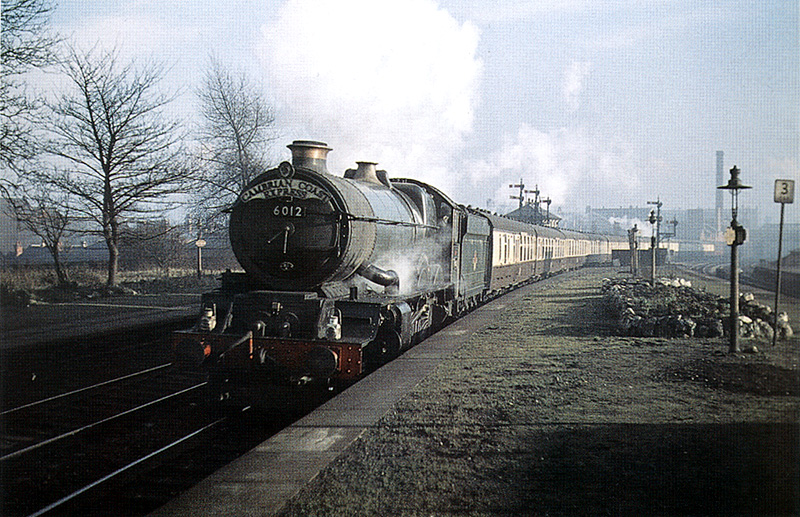 |
|
GWR Route: Banbury to Wolverhampton
Soho and Winson Green: gwrswg1563
 |
Ex-Great Western 4-6-0 No 6012 ‘King Edward VI’ of
the 60XX King class steaming past Soho & Winson Green Station on the down
main line with the Cambrian Coast Express on 25th November 1961. The King class
were the largest of the Great Western Railway's locomotives weighting over 135
tons (loaded) and having a maximum axle weight of 22.5 tons, they were limited
to ‘hatched or Double Red’ main line routes. They had 6 ft 6 in
coupled wheels, four 16.25 inch cylinders and a boiler pressure of 250 lbs,
which delivered a tractive effort of 40,300 lbs. As one of the most powerful
locomotives of their time, they were destined for the crack passenger expresses
between Paddington and the West Country, and also on the Birmingham Main Line
between Paddington and Wolverhampton. Originally Wolverhampton was the Northern
limit for these locomotives because of the weight restrictions over the Shifnal
Viaduct, but after this viaduct had been reconstructed in 1953, the King Class
locomotives frequently travelled through to Shrewsbury.
No 6012 was built at Swindon Works, one of the ten King
class locomotives of Lot 267 and when completed on 21st April 1928, No 6012 was
allocated to Newton Abbot shed. This locomotive was also based in Laira
(Plymouth) shed and various other West Country sheds hauling express passenger
trains to and from the capital until June 1954, when the locomotive moved to
Old Oak Common shed outside Paddington. Some time before the end of 1934 the
distinctive straight feed pipes on No 6012, with which the first twenty King
class locomotives had been built, were altered to a curved pattern. In February
1958, No 6017 was one of the last of the 60XX class to receive a double
chimney. This modification had been found to reduce exhaust pressure, resulting
in improved performance and increased speed. On 7th September 1962, No 6012 was
withdrawn from Stafford Road (Wolverhampton) shed having travelled a staggering
1,910,525 miles and on 9th October 1963 sold as scrap to Cox & Danks of
Langley Green.
Robert Ferris
 back back

|
